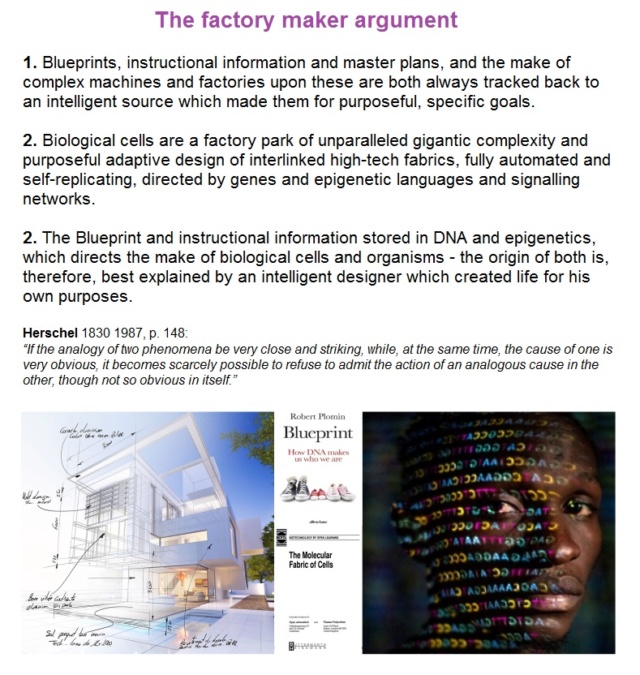How to recognize the signature of (past) intelligent actions
https://reasonandscience.catsboard.com/t2805-how-to-recognize-intelligently-made-artefacts
Creation is evidence of a Creator. But not everybody ( is willing ) to see it.
The (past) action or signature of an intelligent designer can be detected when we see :
- an object in nature very similar to human-made things
- something made based on mathematical principles
- something purposefully made for specific goals
- systems and networks functioning based on logic gates
- specified complexity, the instructional blueprint or a codified message
- irreducible complex and interdependent systems or artefacts composed of several interlocked, well-matched parts contributing to a higher end of a complex system that would be useful only in the completion of that much larger system.
- order or orderly patterns
- Fine-tuning
- objective moral laws
When we say something is “designed,” we mean it was created intentionally and planned for a purpose. Designed objects are fashioned by intelligent agents who have a goal in mind, and their creations reflect the purpose for which they were created. We infer the existence of an intelligent designer by observing certain effects that are habitually associated with conscious activity. Rational agents often detect the prior activity of other designing minds by the character of the effects they leave behind. A machine is made for specific goals and organized, given that the operation of each part is dependent on it being properly arranged with respect to every other part, and to the system as a whole. Encoded messages and instructional blueprints indicate an intelligent source. And so does apply mathematical principles and logic gates.
Romans 1.19 - 23 What may be known about God is plain to them because God has made it plain to them. For since the creation of the world God’s invisible qualities—his eternal power and divine nature—have been clearly seen, being understood from what has been made, so that people are without excuse.


https://reasonandscience.catsboard.com/t2805-how-to-recognize-intelligently-made-artefacts
Creation is evidence of a Creator. But not everybody ( is willing ) to see it.
The (past) action or signature of an intelligent designer can be detected when we see :
- an object in nature very similar to human-made things
- something made based on mathematical principles
- something purposefully made for specific goals
- systems and networks functioning based on logic gates
- specified complexity, the instructional blueprint or a codified message
- irreducible complex and interdependent systems or artefacts composed of several interlocked, well-matched parts contributing to a higher end of a complex system that would be useful only in the completion of that much larger system.
- order or orderly patterns
- Fine-tuning
- objective moral laws
When we say something is “designed,” we mean it was created intentionally and planned for a purpose. Designed objects are fashioned by intelligent agents who have a goal in mind, and their creations reflect the purpose for which they were created. We infer the existence of an intelligent designer by observing certain effects that are habitually associated with conscious activity. Rational agents often detect the prior activity of other designing minds by the character of the effects they leave behind. A machine is made for specific goals and organized, given that the operation of each part is dependent on it being properly arranged with respect to every other part, and to the system as a whole. Encoded messages and instructional blueprints indicate an intelligent source. And so does apply mathematical principles and logic gates.
Romans 1.19 - 23 What may be known about God is plain to them because God has made it plain to them. For since the creation of the world God’s invisible qualities—his eternal power and divine nature—have been clearly seen, being understood from what has been made, so that people are without excuse.













